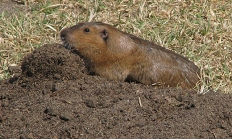Search myodfw.com
Rather plain gray to brown with a spotted breast and reddish tail, the unobtrusive Hermit thrush blends well with the dappled light of the forest understory. It is famous for its sweet, clear, musical song. In includes three or four passages, separated by considerable intervals at higher or lower pitch, but each opens with a flute-like note that gives the performance the effect of a chant of sacred music. In Oregon, during migration and in winter, Hermit thrushes may be found in some residential areas that have dense stands of shrubs, particularly berry producers, and conifers. Hear the song of

The sagebrush vole is among the smaller voles in the state. The tail does not exceed the length of the hind feet. The long, soft, and dense dorsal pelage is grayish tan; the bases of the hairs are lead colored and the tips are black. The ventral pelage is pale buff, the feet light gray, and the tail slightly bicolored. In Oregon, it occurs mostly east of a line connecting The Dalles, Bend, and Klamath Falls, except it is absent from the Columbia Basin and most of the Blue and Wallowa mountains. Clustering of burrows tends to indicate that the
Features: These crab can be identified by their black-tipped claws, wide fan-shaped carapace (body cover) and deep, brick-red color. Habitat: As the name implies, red rock crab prefer the harder substrate habitats such as rocks, pilings, and other structure. Red rock crab prefer higher salinities than Dungeness crab and therefore are usually found in larger estuaries, close to the ocean. They are most common in Coos, Yaquina, and Tillamook bays where there are plentiful rocky substrates. Red rock crabs are native to Oregon. Techniques: Usually caught in combination with Dungeness crab, using the same techniques.
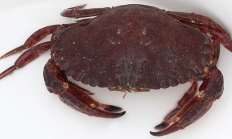
Features: Circular in shape and 1.5-2.5 inches across. Identified by concentric lines and radiating ridges. Longer lived and less abundant than cockles. Habitat: High salinity areas of sand, mud, gravel, or rock. Harvest them in Tillamook, Netarts, Yaquina, and Coos bays. Techniques: These clams can be found in rocky nearshore areas within 6 inches of the surface. Using a rake for these clams is the best harvest method. Learn more here before getting started clamming. See Oregon Sport Fishing Regulations for information on the daily catch limits for bay clams. How to dig for little neck clams (video)
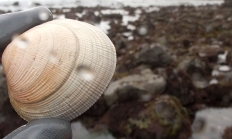

Flesh-footed shearwaters are always exciting birds to find, as they are one of the rarest of the seabirds to occur annually in Oregon. Single birds are sometimes found in flocks of other shearwaters. They are very similar to sooty shearwaters but they are larger with pink or pale whitish feet and dark-tipped pale bills. In addition, their plumage is a deep chocolate-brown, lacking the grayness of the upperpart coloration of sooty shearwaters; and the underwing does not show the sooty's white coverts. It is a rare late fall transient offshore at the western edge and slopes of the continental shelf
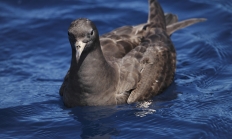
Adaptable and opportunistic, the double-crested is the most abundant and widespread of the three cormorant species found in Oregon, occurring inland and on the coast. Adults have deep, coppery feathers, bordered in black, that glisten with a green iridescent and offset a rich orange throat atop a long curved neck. The bird earns its name from plumes, ranging from white to black, that crown either side of the head during the breeding season. The double-crested cormorant is a common breeder in spring and summer at bays and estuaries, and on islands and cliffs along the coast and lower Columbia River
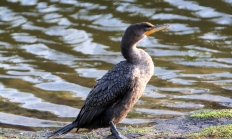
This unusual shorebird breeds along rivers, streams, and lakes in a variety of habitat types throughout the state, from sea level to near timberline. Conspicuous by its distinctive teetering behavior, boldly spotted underparts, and noisy alarm calls, it is usually the only breeding shorebird present in its preferred habitat. The appearance of a sandpiper along a tiny tributary in the upper reaches of a heavily forested watershed can be startling to one unfamiliar with the species' ubiquitous nature. The Spotted sandpiper is a widespread transient and breeder throughout the state, found in nearly every county in Oregon. Most birds depart

This medium sized, stocky sandpiper is rarely observed away from the rocky coastline as it forages close to the zone of salt spray. Primarily a late fall migrant with the major influx into Oregon occurring the last week in October and into early November. Generally silent during migration and on wintering grounds. Often found singly or in small groups with foraging Black turnstones and Surfbirds. Cryptic plumage makes it difficult to observe as it forages slowly over mussel and barnacle beds in typical sandpiper fashion. Roosts on rocks with Black turnstones and Surfbirds near feeding grounds, just above the spray

This slender sandpiper is a rare but nearly annual visitor to Oregon. Although easily overlooked, its drooped bill, light eyeline, long neck, long greenish legs, and unstriped wings in flight help set this medium-sized shorebird apart from similar species. Its preferred habitat during migration is shallow freshwater, usually avoiding mudflats and beaches. It feeds on invertebrates such as midge, beetle and mosquito larvae. A rare fall and occasional spring transient, it is most frequently found in estuarine habitat along the coast. It is also found along the shorelines of the Great Basin region. Hear the call of the Stilt sandpiper
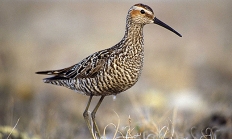
This gull nests on offshore islands, rocky coastal cliffs, and sometimes in grass on level parts of headlands. It forages in the marine and intertidal environments. Glaucous-winged gulls eat just about any animal material they find. They take small fish, barnacles, molluscs, sea urchins, bird eggs, carrion and animal waste discarded from fishing boats. It is rare but regular along the coast and the Columbia River; local and rare in the Willamette Valley. In can be uncommon midwinter at Sauvie Island. Most Glaucous-winged gulls in Oregon nest in the mouth of the Columbia River. Hear the call of the Glaucous-winged
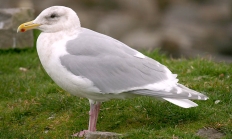
The Eurasian collared-dove is quite similar to the Ringed turtle-dove but is somewhat larger with grayer underparts and darker primaries. It is a bird of agricultural areas and readily visits bird feeding stations in urban and rural neighborhoods. During the 1600s this Indian species began to expand its range until today it occurs in all of Europe and most of Asia. After introductions in the Bahamas in 1974 and Guadeloupe in 1976 it soon expanded throughout the Caribbean and reached Florida by 1980. It is now expanding into other parts of North America, reaching Oregon in 1988. It is expected

Although not as imposing as the Canvasback, the redhead is a large, handsome, fast-flying diver. The drake has a red head, black breast and tail coverts, and steel gray back, flanks and tail. Hens are a medium brown. During courtship, the drake utters a very un-duck-like meow. Known for nest parasitism - laying eggs in the nests of other birds, usually other diving ducks - redhead eggs have also been found in the nests of a variety of species. It is an uncommon summer resident in northeast Oregon, but commonly breeds at Batch and Bogus lakes and locally elsewhere in

While not as abundant or conspicuous as the more familiar Canada and snow geese, the great white-fronted goose represents one of the first signs of fall. The greater white-fronted goose is gray-brown in body color and has orange feet. Adults have the namesake white forehead, pinkish-orange bill, and black speckled/barred breast and belly. Laugh-like calls from small skeins of these birds are heard high overhead in August through September in the north Willamette Valley and across the Cascades to south central Oregon and northeast California. Hear the call of the greater white-fronted goose Photo by Dave Budeau, ODFW
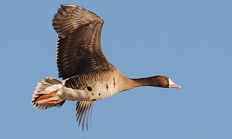
The emperor is a medium-sized stocky goose with a white head and metallic blue-gray body reminiscent of a blue-morph snow goose. Dark throat and undertail coverts as well as yellow feet distinguish it from the latter. Juveniles are brown with a gray-black head and neck that becomes white with black flecking in late fall. Vocalizations include in-flight kla-ha, kla-ha, kla-ha, and an alarm call a deep ringing u-lugh, u-lugh, u-lugh. The emperor is a rare but regular visitor in Oregon during migration and in winter, most commonly on the coast. Hear the call of the emperor goose Photo from USFWS

This small white goose is similar in plumage to the snow goose in all ages. In mixed flocks, the Ross's smaller size, shorter neck, head and bill profile and more rapid wing-beat may be apparent. They are a common spring and fall migrant through Klamath and Harney basins. During migration and on wintering grounds, the Ross's goose uses lakes and shallow marshes for roosting and agricultural crops and irrigated hay meadows for feeding. They arrive in Oregon around mid-October and leave around mid-November to continue their migration. They are a common spring and fall migrant through Klamath and Harney basins

Few birds are as astonishing as the American dipper. This nondescript, dark brown to gray bird is seldom seen more than a few feet from the water's edge. Its elaborate song, which can come forth even on cold winter days, is readily heard above the noise of rushing streams. This bird's ability to dive into a rushing stream to forage on aquatic invertebrates and reappear in the same location has elicited wonder and excitement from ornithologists, naturalists, and birders as well as envy and adoration from fly-fishers. It is an uncommon year-round resident in montane streams and rivers throughout Oregon

Palm warblers constantly pump their tails in a down-then-up motion, more so than any other warbler. They also walk and run on the ground more than most warblers. A key field mark is the bright yellow undertail coverts which contrast with whiter underparts. Palm Warblers are hardy warblers, migrating early in the spring and late in the fall. Birds presumably Palm warblers are regular fall transients on the outer Oregon coast and irregularly remain through the winter and spring. They are occasional spring and fall transients in the Willamette Valley and have been found wintering there. Hear the song of
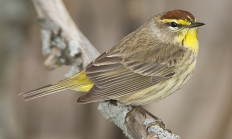
The Brown-headed cowbird was referred to in early literature as the "buffalo bird" presumably because it commonly foraged on insects flushed under the feet of ungulates. It is a brood parasite, laying its eggs in nests of other species and leaving the rearing of young to surrogate parents. This has had serious consequences for many host species within the cowbirds' range. In Oregon, the Brown-headed cowbird is a common migrant and breeder in open habitats and woodland edges in all parts of the state. It is most abundant in agricultural land, sagebrush and juniper steppe, coastal scrub, riparian zones, and

The Botta's pocket gopher tends to be dark rusty-ocherous on the dorsum and light buffy-ocherous on the venter; the nose is dusky and the feet and chin are white. This pocket gopher is territorial; only during the breeding season can more than one individual be found in the same burrow system. Burrow systems do not cross each other, but spacing within and between burrow systems is remarkably uniform. In Oregon, this gopher occurs as disjunct populations: one in Curry County only, the other in southwestern Klamath County, southern Jackson County, and western Josephine County, with an extension through central Douglas
